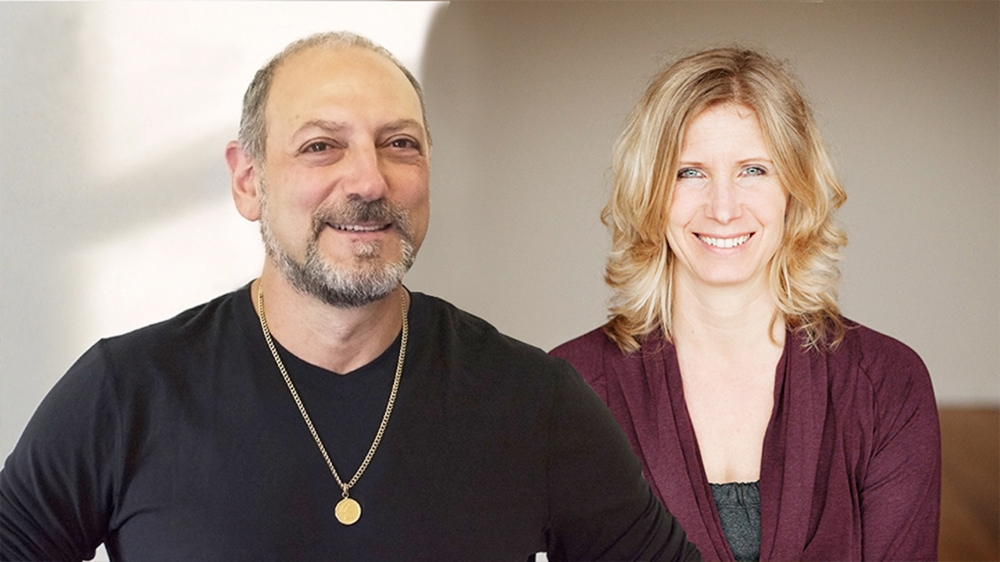I recently had the chance to interview yoga educator Leslie Kaminoff. Leslie is the co-author of the book, Yoga Anatomy, along with Amy Matthews. He has also been leading trainings for yoga and movement teachers for many years both online and in person.
I highly recommend watching the full interview to get Leslie’s valuable insights in his own words. We had a long chat, so get a cup of tea ready or listen to it in parts.
We discussed:
- The changing face of the yoga world and how it’s really always been evolving.
- Fixed breath and alignment instructions and to what extent these are still helpful for both students and teachers.
- Sequencing versus choreographing yoga classes.
- And, how to offer students enquiries, versus instructing techniques.
At the end of our conversation, Leslie gave three major takeaways for yoga teachers that I found so important personally, so I want to highlight them for you here too.
I asked Leslie to share what would he like to see yoga teachers doing more of, based on his experience?
1. Make your feedback mechanism effective and be open to negative feedback as a yoga teacher
Leslie: To keep improving, what we as teachers need to hear is what didn’t work in a class or training. So keep asking yourself, what have you done to make sure that your students know that you are open to hearing negative feedback as well as positive?
In the yoga world, people can just walk out of the class and never come back, so it’s difficult to know why unless they make a complaint. So if you run classes or a studio, how effective is your feedback mechanism? In return, give feedback if something could have been better for you in trainings and workshops you attend as a student.
Seek a mentor who can give you feedback. Don’t be afraid to bring things out in the open – be ok with doing things wrong. It’s not a pleasant conversation. You need to feel uncomfortable and not turn away from it.
2. After you’ve been on a workshop or training, integrate your new discoveries and ah-ha moments gradually
Leslie: When you’ve been to a workshop and get an ah-ha moment, of course, you want to share with your students right away. But introduce it gradually in a ratio of 90:10. Give them 90% of what they were expecting from class and feed in 10% of your amazing new knowledge or techniques. As you do this gradually, you build a student body who are willing to grow with you.
Related to this – when you have learnt something new, see how it feels in your own body first. Practice it yourself for a while before you put it in your classes. Take time to digest your new learnings – make them part of your body then teach them from what you feel – don’t just regurgitate what you’ve heard. (It’s this regurgitation that leads to these old alignment instructions being passed on and on without perhaps the evidence behind them). When you’ve practiced enough, the experience that remains is what you can then teach in your own words.
3. Give your students enquiries and options
Leslie: It is far more powerful to give your students enquiries sometimes and not just solely teach them yoga or movement ‘techniques’. This means giving your students an alignment or breath instruction and asking them to notice how it feels in their body. Then ask them to try the pose another way and see how that feels, perhaps moving on an inhalation instead of an exhalation this time, for example, or positioning the arms differently.
See where your teaching is on the spectrum of enquiry and techniques – there is no ‘wrong answer’ with an inquiry but there is with technique. So try to bring a balance of the two into your classes.
Thanks to Leslie for giving us his time for this conversation. I hope you enjoy watching the full talk.
You can find out where Leslie is teaching and offering trainings on his website www.yogaanatomy.org
Train online with the EkhartYoga Academy
Did you know you can know now learn online with our EkhartYoga teachers on the EkhartYoga Academy? Check out our specialised courses for teachers or teachers in training in a range of topics, including anatomy, philosophy, sequencing and the business of yoga. The best part is, you can learn in your own time, at your own pace.

